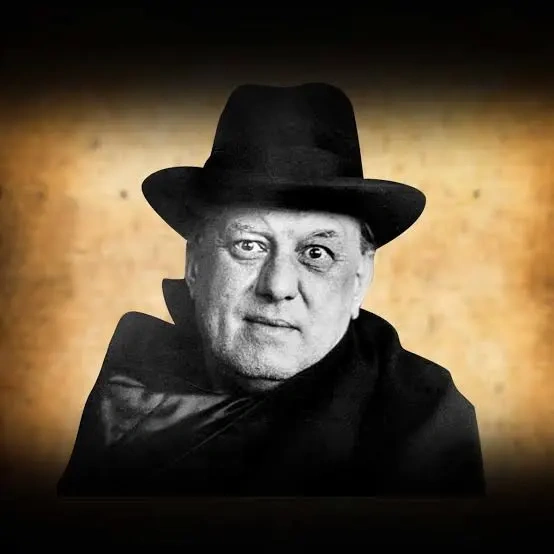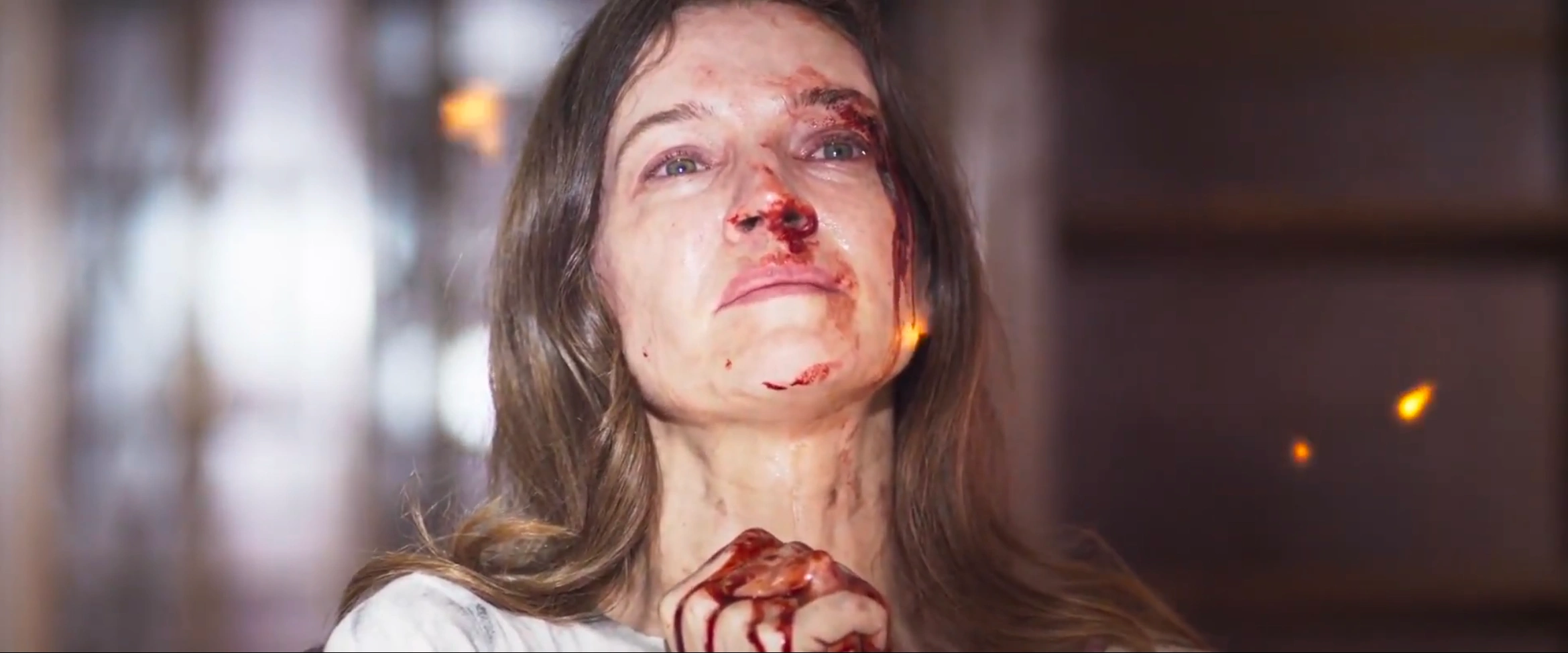A Dark Song is a 2016 British-Irish independent horror film. Don't let the word "horror" fool you, this isn't about jump scares. At its heart, it's a deeply human story about grief, trapped in ceremonial magic. The film is written and directed by Liam Gavin in his directorial debut, starring Steve Oram and Catherine Walker. Think of it less as a monster movie and more as an intimate two-character study that happens to involve ancient rituals and the supernatural. If you've ever wondered what real occult practices might look like—stripped of Hollywood glamour and shown in all their grueling, tedious reality—this film offers a rare, unflinching glimpse. It's slow, yes, but purposefully so, mirroring the painstaking months required by the ritual itself. Whether you believe in the supernatural or not, A Dark Song works both as a literal journey through dark magic and as a powerful metaphor for confronting grief and finding forgiveness.
You can watch A Dark Song on Amazon Prime.
Plot Summary
A Dark Song follows Sophia Howard, a grieving mother who rents an isolated mansion in rural Wales. Her goal is heartbreaking yet extraordinary: she wants to summon her guardian angel through a months-long occult ritual from The Book of Abramelin. By doing so, she hopes to speak to her dead 7-year-old son. She hires Joseph Solomon, a gruff, irritable occultist, to lead the ritual. Solomon warns her early on that once they start, they cannot leave the house until it's finished, or terrible consequences will follow.
The ritual begins with strict preparations: fasting, prayers, bloodletting, and painful acts meant to purify Sophia. The house becomes their prison. Solomon is harsh, berating her for every mistake, claiming purity is key. When Sophia refuses to perform the forgiveness ceremony, Solomon forces her into darker acts. He makes her drink his blood and later humiliates her sexually, fooling her to think it's for the ritual but it's for himself. Angry and exhausted, Sophia retaliates by urinating in his food, but both are bound together now, and the ritual continues.
Over time, they grow to understand each other a little more, their resentment giving way to a strange companionship. But Sophia finally reveals the truth: she doesn't want to talk to her son, she wants revenge on whoever kidnapped and killed him. This confession shocks Solomon, who tells her that dishonesty has spoiled the ritual's purity. He performs a terrifying "rebirthing" ceremony, drowning and reviving her in the bathtub. During a violent struggle soon after, Sophia accidentally stabs Solomon. He insists the wound is a sign the ritual is finally working. Despite growing weak, he presses on.
Strange things begin to happen. Sophia hears whispers, sees shadows, and hears her dead son's voice. At one point, a demon using her son's voice tells her: "I'm just some cunt using your son's voice to make you afraid." When Solomon's wound becomes infected from sepsis, he falls and eventually dies in his sleep. Before dying, he reveals his own wish: he wants the angel to make him invisible for the rest of his life, to be away from people as he "wants some quiet before the howl."
When Sophia goes back to his books for further instruction, everything has been crossed out, unreadable. She flees the house, only to find herself magically returned to it again and again. Terrified, she reenters and faces horrifying demons that drag her to the basement, torment her, and cut off a finger as she begs for forgiveness. When she begs for forgiveness, a bright white light floods the room, and before her stands a massive, beatific angel in armor, beautiful and awe-inspiring. Sophia asks not for revenge, but for the power to forgive. The angel smiles and speaks to her (unheard by the audience), granting her request. She buries Solomon's body in peace through a water burial and drives away, finally free.
Review
Watching A Dark Song feels like being trapped inside someone's grief. It's quiet, slow, and deeply unsettling. The film doesn't rush—every scene builds like a prayer turning darker and darker. This is not a jump-scare horror. It's a story about loss, guilt, and the limits of faith. The horror comes from endurance: the months of ritual, the claustrophobic house, the isolation, and the haunting question of whether any of it is real, which is the confusing part about the ending. Did Sophia hallucinate everything or was it real? Many believe everything that happened was real and not Sophia's own imaginations.
The ending divides audiences though. Some found the angel scene breathtaking, a moment of divine beauty that rewards the long, painful journey. Others felt it was ruined by bad CGI and preferred that the film remain subtle and mysterious. Director Liam Gavin acknowledged in a Q&A that budget constraints affected the CGI quality, and he was tempted to cop out with just a bright light offscreen but decided that would spoil everything he spent 90 minutes building. Yet, even those who disliked the visuals often admitted the emotional ending worked beautifully. Sophia's choice to ask for "the power to forgive" instead of revenge ties the entire story together.
Sophia may also have been indirectly responsible for her son's death. She was late picking him up from school, which led to his kidnapping. The scene with her sister in the restaurant shows how she keeps changing her story. Her sister wanted her to go back to the psychiatric ward and forget her dead child and play with her living nieces and nephews.
Some viewers debated whether Joseph Solomon might have been involved in her son's death, though this theory is less supported. He asks her directly if she thinks he had anything to do with it, talks about doing the ritual several times and getting it wrong, and someone steals her son's picture which reappears in vomit near the end. However, most interpretations focus on Sophia's own guilt and journey toward self-forgiveness.
Catherine Walker as Sophia gives one of the most powerful performances. Her sadness feels raw, and her transformation from bitterness and rage to acceptance is genuinely moving. Steve Oram's Solomon is equally fascinating: rough, unpredictable, yet strangely human. Their chemistry carries the whole film, noting how the film's power comes not from monsters but from the emotional intensity between the two leads.
The cinematography by Cathal Watters deserves special mention. The wide shots of the rugged Welsh countryside make the house feel even lonelier, creating beautiful scenes in this horror movie. The music by Ray Harman is hauntingly minimal, sometimes just a low hum or a single note that makes you uneasy. The spare, brooding, dread-filled score sticks with you long after the movie ends.
The Abramelin Ritual: Fact and Fiction
The ritual is based on The Book of Abramelin, a real medieval grimoire about summoning one's guardian angel after months of purification and prayer. This text is considered a prerequisite for achieving the status of "Adept" in ceremonial magic. The ritual originally requires 6-18 months of purification, and the goal is to contact one's "Holy Guardian Angel."

Famed occultist Aleister Crowley actually attempted this ritual at Boleskine House in Scotland but never completed it. According to legend, Crowley got to the part where you summon the dukes of the hierarchy of demons, never bound them, then left the property, leaving a portal open. Jimmy Page of Led Zeppelin later owned the house and sold it because, as the story goes, the place felt wrong. The director changed the symbols and some ritual details during filming because he was paranoid about actually performing the real ritual. Interestingly, he said he found himself going from agnostic/atheist to Catholic as the movie was being finished.
The director did a great job in making the rituals realistic. This has to be the closest depiction of true ceremonial magic ever filmed. The film doesn't cop out in its comparisons between science and the supernatural, treating occult magic more like charting the unknown than doing something entirely outside the scientific realm. As Solomon says in the film: "science describes the least of things."
Many people see the ritual as symbolic rather than literal. Sophia's journey could be the inner struggle of grief—her isolation, her torment, her self-punishment, all leading to forgiveness. The demons might be guilt and pain, while the angel represents healing. The ambiguity is part of the film's magic, it lets you decide whether it's real or not.
The film also fascinates fans of real occultism. It blended Christian, pagan, Gnostic, and Kabbalistic elements, reflecting Ireland's own mix of religious and occult traditions. The ceremonial magic depicted is heavily based on Judeo-Christian texts.
While most praised the film's horror and emotion, some found it too slow. It takes over an hour for anything to happen, and some people felt the pacing was sluggish. A few wished the movie explained more about the son's death or who was responsible.
Book vs Movie Comparison
The movie takes loose inspiration from the real Book of Abramelin. In the Book of Abramelin, the primary goal is to achieve Knowledge & Conversation with your Guardian Angel, which is a spiritual guide. In the movie, the goal is somewhat modified: speaking to the guardian angel to access revenge / speak to the dead child. So the movie adds a personal, emotionally charged motive. The film simplifies the text while keeping its heart: purification through suffering and ultimate contact with the divine. It misses some of the book's deeper Kabbalistic details but adds modern emotional realism. Rather than a scholar's journey to enlightenment, it's a grieving mother's descent into hell and climb back to light.
The film's depiction shows how dangerous and arduous real ceremonial magic would be, a very good reason for how things like this can exist without everyone and their mom casting spells. This isn't Hollywood magic with sparks and booms; it's months of suffering, discipline, and genuine peril.
Final Thoughts
A Dark Song is not a film for everyone. It demands patience and reflection. But for those who stay with it, it's unforgettable. It's a film that makes you feel the exhaustion of faith, the loneliness of grief, and the quiet miracle of forgiveness. As one viewer put it, "She went through hell and found heaven in herself."
The slow burn is a deliberate representation of the painfully slow and repetitive nature of the ritual itself. It treats you like an adult and trusts you to understand the layers of meaning beneath the surface. Whether you see it as a literal supernatural journey or a way for processing grief, A Dark Song stands as one of the most intelligent and emotionally powerful horror films of the decade.
Watch on Amazon Prime.

